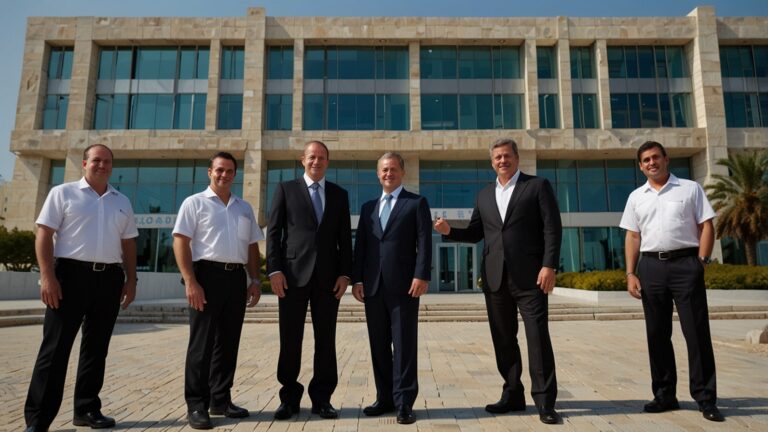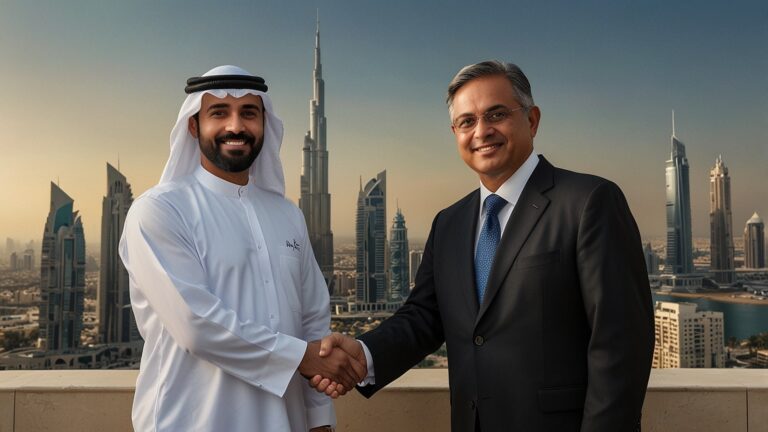On September 7, 2025, ASML, the Dutch semiconductor equipment manufacturer, proclaimed to have become the biggest shareholder of Mistral AI, a foremost French artificial intelligence startup, pursuing a one billion and two hundred million financing round.
The news of this strategic investment was reported only by Reuters, marking a significant step taken by ASML to diversify its portfolio beyond chipmaking technology and capitalise on the booming AI industry.
This transaction positions ASML as one of the key players in facilitating the future AI revolution, as the world races toward AI dominance, and Mistral AI acquires the necessary capital to scale its generative AI models. It has been widely discussed, and the announcement has significant consequences for the tech industry, European competitiveness, and investor confidence in AI-driven growth.
This article discusses the specifics of the investment, its strategic significance, and how it will transform the AI and semiconductor scenes, which is why it will be one of the best business and technology stories of 2025.
ASML’s Bold Move into AI
ASML, based in Veldhoven, Netherlands, is the global leader in photolithography equipment used to fabricate advanced microchips in smartphones, AI-based data centres and much more. ASML, with a market capitalisation of over 350 billion, has been a mainstay of the global semiconductor industry, and counts customers such as TSMC, Intel and Samsung.
The fact that it decided to be the first to invest in the latest financing round of Mistral AI shows that the company is taking a strategic shift to value-capture in the AI ecosystem, where there is a rapidly growing demand for high-performance computing.
Founded in 2023 by former researchers from Meta and Google, Mistral AI has quickly become a European leader in generative AI, with models that compete with those of OpenAI and Anthropic. The tech giants, as well as the investors, are interested in the company since it has been focusing on efficient, open-source AI solutions.
The investment of ASML, both equity-based and strategic partnerships, highlighted the increasing convergence of semiconductor and AI ecosystems, in that advanced chips support the computational requirements of the current AI systems.
Details of the $1.2 Billion Investment
Closed on September 7, 2025, the funding round of $1.2 billion values Mistral AI at an estimated of approximately 6 billion, a notable increase, compared to its valuation of 2 billion in 2024. ASML had been the lead investor in the round, with a significant equity stake, reportedly becoming the largest shareholder in Mistral; however, no figures are given as to the percentage of the company they own.
The other investors in the round are current investors, such as General Catalyst and Andreessen Horowitz, and they are joined by new entrants, including European venture capital firms, which indicates a high level of confidence in Mistral’s growth path.
The capital will power the growth of Mistral AI, including recruiting the most highly qualified personnel, expanding its cloud infrastructure, and accelerating research into large language systems tailored to the needs of enterprise-scale use.
ASML is fully engaged in more than just financial support, as plans to cooperate with AI-oriented optimisation of chip designs are proposed through the application of Mistral’s AI knowledge to improve ASML’s manufacturing processes. Such a collaboration may lead to innovations in chip efficiency, which will be crucial for meeting the computational requirements of future AI workloads.
Strategic Context and Market Dynamics
The venture coincides with Europe’s attempt to manifest itself in the international AI contest, which U.S and Chinese actors characterise. In Paris, Mistral AI has been heralded as a beacon of European tech innovation, and its open-source framework is gaining momentum among developers and firms seeking to transition away from proprietary systems.
The support of ASML reinforces the role of Mistral as a counterpoint to American AI titans as part of European Union efforts to create technology champions. The shift of ASML is based on larger market trends. Due to the increasing use of AI chips, such as those for generative AI, autonomous vehicles, and data analytics, the pressure on the semiconductor industry is remarkable.
The machines manufactured by ASML that facilitated the manufacturing of the modern cutting-edge 3nm and 2nm chips are essential in this ecosystem. Investing in Mistral, ASML gains an advantageous presence in the AI software layer, which can potentially affect the priorities in chip design and reinforce its relations with major customers.
The timing of the deal is provided in the context of the performance of Mistral. The company says that in 2025 it had 300 per cent more enterprise clients, and its models run applications in healthcare, finance, and logistics.
This expansion and an enthusiastic community of more than 1 million users meant that Mistral was an appealing target to ASML, which attempts to broaden its revenue bases in geopolitical tensions, competing with the semiconductor supply chain.
Market Reaction and Industry Implications
Investor eagerness towards the company’s AI exposure led to a 3.8 per cent increase in the stock of ASML in European trading on September 7, 2025. Mistral AI, a privately held company, is not publicly traded, though the funding round has elevated its presence, and analysts think that it will seek an IPO within the next several years.
The acquisition has also been of interest to the European AI ecosystem, and commentators on X have lauded the connection as a game-changer for European technology. The investment has very broad implications. In the case of ASML, it also spreads risk by being aligned with a high-growth sector that could protect the firm against volatility in the semiconductor market.
In the case of Mistral, the resources and expertise of ASML give a competitive advantage and enable the rapid scaling and innovating. The collaboration might also drive the development of AI-optimised chip designs faster, which will have an overall positive impact on the whole tech industry.
However, challenges loom. Regulation of AI investments is on the rise, and data privacy and market concentration are being raised. ASML and Mistral will have to manoeuvre around such matters, especially in Europe, where GDPR and AI laws are strict. Additionally, the rivalry between American AI companies and Chinese semiconductor projects may make the partnership’s success difficult in the long term.
Future Outlook for ASML and Mistral AI
In the future, ASML and Mistral aim to strengthen their relationship, with collaborative research on AI-based semiconductor developments anticipated by 2027. Mistral forecasts to expand its staff to 500 people by mid-2026 with an emphasis on machine learning and cloud computing talent.
In the meantime, ASML also anticipates investing half a billion dollars in AI-related research and development within two years, leveraging Mistral’s experience to enhance its Extreme Ultraviolet (EUV) lithography equipment.
This also puts ASML in a position to affect AI hardware standards, which may define the specification of future chip architectures. In the case of Mistral, the investment enables it to compete with better-capitalised competitors, and its open-source ideology may lead to higher usage of its models, thereby undermining the hegemony of closed systems, such as ChatGPT.
A Defining Moment for Tech in 2025
The ASML Mistral AI joint venture, finalised on September 7, 2025, is a significant technological event, combining semiconductor expertise and AI development. In the case of ASML, it represents a big leap to ensure that it is relevant in the future of AI, whereas Mistral attains the resources needed to realise its own vision of accessible and efficient AI.
With Europe aiming to take a larger share of the global technology market, this deal would serve as an example of cross-industry cooperation. This investment, with the potential to push breakthroughs in both AI and chipmaking, is a leading business story, with all investors, tech enthusiasts and policymakers observing.









